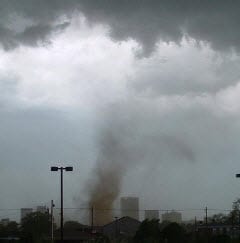Over the last few years, Oklahoma has seen some of its costliest natural disasters, and with the increase in the losses from tornado damage, homeowners insurance rates are now on the rise.
The season for tornadoes has now begun and people across the state are keeping a watch on the skies.
Some of the regions in Oklahoma are among the hardest hit by severe weather in the entire country. In 2010, there were 55 tornadoes that swept their way across that state. Among them, two were enormous EF4 tornadoes that struck Oklahoma City, injuring 80 people and killing three.
The state and its homeowners insurance companies have not failed to notice that the risk is high.
According to Rick Smith, a meteorologist from the National Weather Service, “Anything can happen in any given year.” He went on to say that “certainly these first 10 to 15 days in May are really prime time for tornadoes in the state.”.
This extreme form of weather is not exclusive to Oklahoma. At some time or another, almost every state in the U.S. has experienced a twister, and they can occur at any time of the year. However, it is during the spring and summer months in which the 48 contiguous states experience the highest strength and frequency of tornadoes. It is during this time that the damage occurs which can cause homeowners insurance companies to have to increase their rates, as is the case in Oklahoma right now.
In 2011, in April, Birmingham and Tuscaloosa, Alabama were struck by a twister that killed 65 people and caused $7.3 billion in insured property damage. In that same year, only a month later, 161 people were killed with a tornado ripped through Joplin, Missouri and caused $2.1 billion in insured damages. That year, for the span of May 20 to May 27, there was almost $7 billion paid out in auto, business, and homeowners insurance claims. As the weather continues to be extreme in these regions, the losses will continue to rise and so will the premiums to cover the damage.

